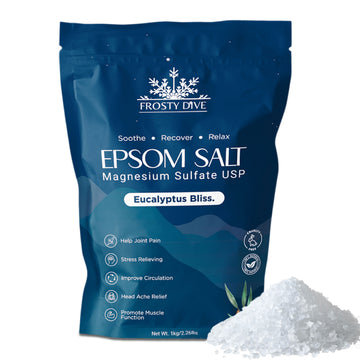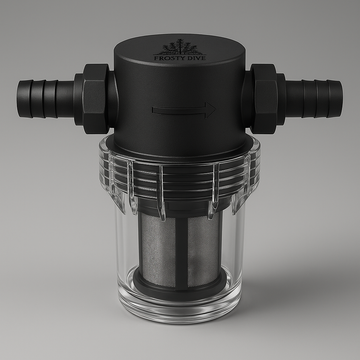The wellness and fitness world is buzzing with the latest trends and techniques to optimize performance and recovery. One such practice that has gained significant traction is the ice bath. From professional athletes to weekend warriors, many swear by the refreshing chill of submerging themselves in icy waters. But the question remains: Are ice baths worth it? In this comprehensive guide, we'll explore the science behind ice baths, their benefits, potential risks, and everything you need to know to decide if this chilly therapy is right for you.

What Are Ice Baths?
Ice baths, also known as cold-water immersion (CWI), involve submerging the body in cold water, typically ranging from 50°F to 59°F (10°C to 15°C), for a specified period, usually between 10 to 15 minutes. The idea is to use the cold temperature to reduce muscle inflammation, speed up recovery, and enhance overall well-being.
The Science Behind Ice Baths
How It Works
When you immerse your body in cold water, several physiological responses occur:
Vasoconstriction: The cold causes blood vessels to constrict, reducing blood flow to the muscles. This can help decrease inflammation and swelling.
Metabolic Slowdown: Lower temperatures slow down cellular metabolism, which can minimize tissue breakdown and further reduce inflammation.
Rebound Vasodilation: After exiting the cold water, the body experiences vasodilation (widening of blood vessels), which increases blood flow and helps flush out metabolic waste products from the muscles.
Potential Benefits
Reduced Muscle Soreness
One of the primary reasons athletes turn to ice baths is to alleviate delayed onset muscle soreness (DOMS). Several studies suggest that cold-water immersion can help reduce the severity of muscle soreness experienced after intense exercise, allowing for quicker recovery and better performance in subsequent workouts.Decreased Inflammation
The anti-inflammatory effects of ice baths are well-documented. By reducing blood flow to the muscles and slowing down cellular processes, ice baths can help mitigate the inflammatory response triggered by intense physical activity.
Enhanced Recovery
Speedy recovery is crucial for athletes and fitness enthusiasts who maintain a rigorous training schedule. Ice baths can aid in reducing muscle fatigue and improving overall recovery times, allowing individuals to train harder and more frequently.
Improved Mental Resilience
Beyond the physical benefits, ice baths can also have a positive impact on mental toughness. The act of enduring the discomfort of cold water immersion can build mental resilience and improve one's ability to handle stress and adversity.
Potential for Better Sleep
Cold exposure can stimulate the production of norepinephrine, a hormone that helps regulate sleep patterns. Some users report improved sleep quality after regular ice bath sessions, although more research is needed in this area.
Tips for Safe and Effective Ice Baths
Start Slow
If you're new to ice baths, start with shorter sessions and gradually increase the duration as your body acclimates to the cold.
Monitor Temperature
Aim for a water temperature between 50°F to 59°F (10°C to 15°C). Use a thermometer to ensure the water stays within this range.
Time It Right
The optimal duration for an ice bath is typically between 10 to 15 minutes. Avoid exceeding 20 minutes to reduce the risk of hypothermia and other cold-related injuries.
Warm Up Gradually
After exiting the ice bath, warm up gradually with a warm shower or by putting on warm clothing. Avoid hot showers immediately after, as this can cause a sudden change in blood flow and lead to dizziness.
Stay Hydrated
Cold exposure can lead to dehydration. Ensure you drink plenty of water before and after your ice bath session.
Conclusion
So, are ice baths worth it? The answer depends on your individual needs and goals. For athletes and fitness enthusiasts seeking to reduce muscle soreness, speed up recovery, and build mental resilience, ice baths can offer significant benefits. However, it's essential to approach this practice with caution, considering the potential risks and individual variability in response.
























